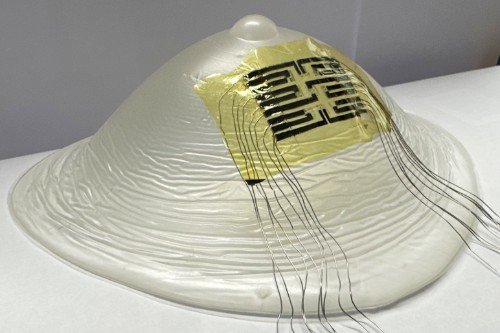A PhD researcher at the University of Bristol has developed a flexible, skin-like patch that detects subtle temperature changes across the breast, offering a potential new tool for early breast cancer detection. The patch is designed to be low-cost, noninvasive, and suitable for at-home use, especially for younger women who are often excluded from routine screening.
Invented by Marah Alassaf, the patch features nine flexible temperature sensors embedded in an ultra-thin material that conforms naturally to the body. It maps heat variations across the breast surface, which can signal abnormal tissue activity. Cancer cells typically grow and spread rapidly, increasing blood flow and metabolism in the affected area, which leads to localized temperature increases.
Alassaf was inspired to pursue this research after two women she knew were diagnosed with breast cancer in their early thirties. Their cases were detected late due to limited screening options for younger women. Motivated by their experiences, she combined her engineering background with digital health research to create a practical solution that could support earlier detection.
The patch was developed under the guidance of Dr. Faezeh Arab Hassani, a senior lecturer in microelectronics. It was presented at the IEEE International Conference on Flexible Printable Sensors and Systems in Singapore, where it won second place in the Student Best Paper Award.
While still in early development, the patch has been tested on breast models with simulated tumors using controlled heat sources. The next phase will involve clinical testing to evaluate its performance on actual patients. Future improvements will focus on increasing sensor density, enhancing image resolution, and ensuring long-term reliability.
Traditional screening methods like mammography, ultrasound, and MRI are effective but often expensive, uncomfortable, and inaccessible in low-resource settings. This patch could complement existing tools and expand access to early detection, particularly for high-risk individuals or underserved populations.
Article from the University of Bristol: Bristol PhD researcher on personal mission to help detect breast cancer early invents temperature-sensing patch
Abstract in IEEE Xplore: Flexible Ultrathin Temperature Sensor Array as a Patch for Early Breast Cancer Detection

